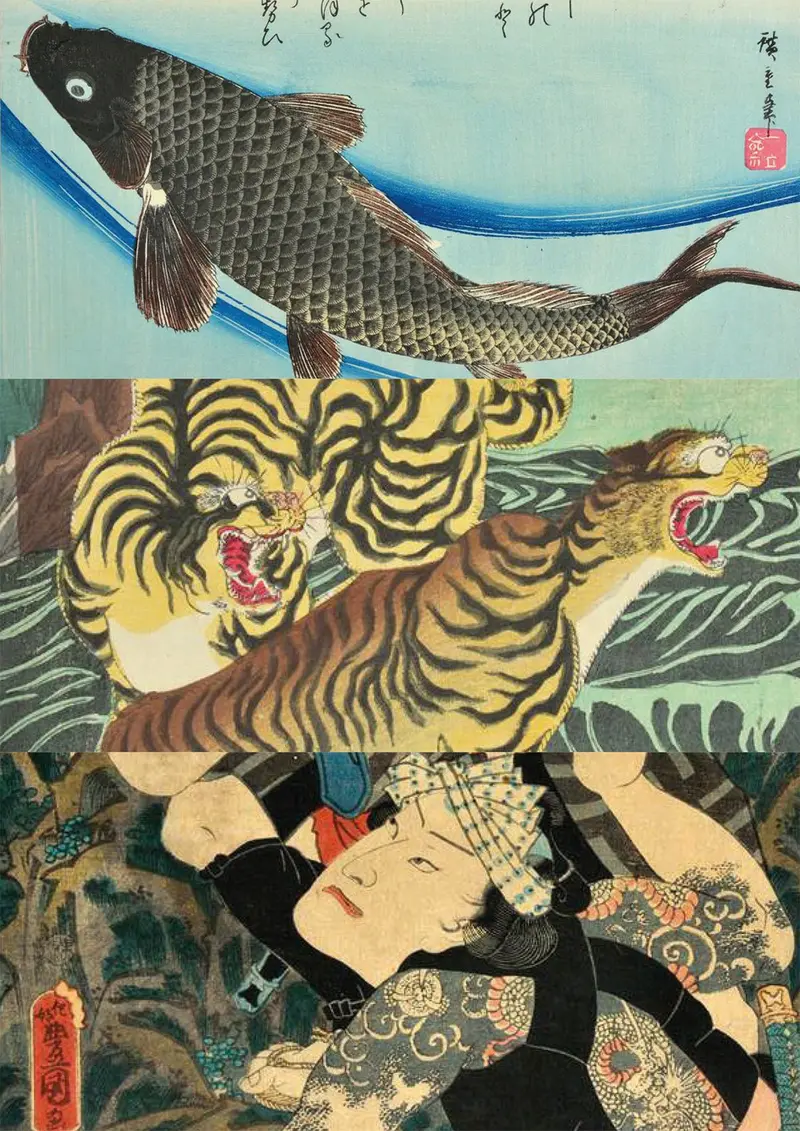[Translate to English:] text 1
Tattoo motifs migrate and get about: in the past by travelers and today much more quickly and extensively in the age of Internet communication. Japanese tattoo culture with its historical motifs, for example, is increasingly gaining in popularity in Europe and North America. It is partly triggered by the globally widespread Japanese pop culture and the increasing international popularity of philosophical and religious concepts from Japan. By taking over signs and symbols, one can in turn take part in a different attitude towards life.
Tattoos - irezumi (literally: introducing ink) - have a very long tradition in Japan. If tattoos first had a magical-religious meaning, they later served to identify offenders. In the Edo period (1600-1868) whole body tattoos were in fashion, especially in the class of the samurai and parts of the urban middle class. An important role was played by the development of the Japanese color woodblock print as a new medium for the mass distribution of pictures based on the widest range of profane and religious themes. These prints gave the tattoos an inexhaustible reservoir of motifs for their work. In part, tattoo artists also acted as graphic artists and used similar tools and colors.

